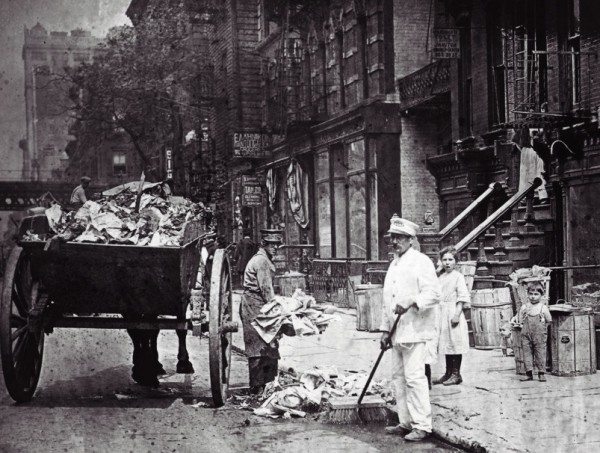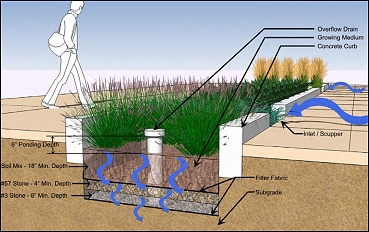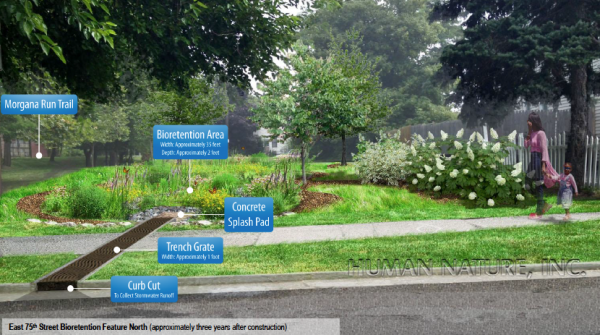Grey Infrastructure
In the mid-19th century the “sanitary idea”, proposed by Edwin Chadwick in England, stressed the importance of the physical environment and the role of decaying organic matter as the source of disease. Sanitary engineering solutions emerged, focused on rapid and efficient disposal of urban wastes and providing clean water.

What we now call Grey Infrastructure emerged during the 19th century alongside industrialization in many parts of the world.
Effective technological innovations in transportation, communications, energy, and environmental services (water, wastewater, garbage disposal) often enabled economic growth, and contributed to the physical transformation of city planning and development. Although change develops unevenly, ever more elaborate and more effective water delivery and sanitation systems emerged across the U.S. and abroad, supporting the growth of today’s megacities.
Technology adoption shaped local and global urban infrastructure in past centuries and will continue to do so. Following the general course of innovation, problems are observed and new technical systems are initiated and reviewed. Sometimes our attempt to remedy urban problems produces contradictory outcomes. For example, as city-wide sewer systems alleviated sanitation problems of the inner city, waste was redirected to nearby rivers, lakes and bays, thus creating new health and pollution hazards.
Green Infrastructure
The historic escalation of urban engineering to provide potable water, process trash, and cleanse wastewater are now being revisited as part of Green Infrastructure initiatives*. Some cities are re-thinking failing engineered systems while others are embracing innovations that sidestep an old structure entirely.

Communities are exploring practical integrations of built and natural systems, incorporating all the natural, semi-natural and artificial networks of multifunctional ecological systems within, around, and between urban areas, at all spatial scales (Tzoulas et al. 2007). As a strategy, green infrastructure upgrades parks and open space into a coherent planning scheme having differently scaled landscapes and purposes.
Using green infrastructure design, ecological processes are harnessed to reduce negative impacts, though the physical expression may bear little resemblance to a lush, pristine landscape. For instance, reducing stormwater runoff during a heavy storm may be achieved using a combination of rooftop vegetation, pervious pavings, roadside bioswales, rain gardens, a series of connected retention ponds, and underwater detention facilities, with the entire system serving to slow water flow and increase soil infiltration.
Innovations are developing rapidly. Some are achieved directly on the ground in parks and natural areas. Others entail engineering strategies so that large buildings or complexes – schools, libraries, and apartment buildings – contain networked features such as green roofs, living walls, and water reuse systems. Grey infrastructure systems can be retrofitted with ecological elements such as roadside plantings that become wetlands and support wildlife.
Open Spaces Sacred Places
Typically, we discuss the health, recreation, social engagement, and public space benefits of green spaces. But green spaces can serve multiple functions, from the sanitary to the sacred. This month we’ll examine how Open Spaces Sacred Places can be integrated into novel, creative Green Infrastructure.

—
*For a comprehensive overview, see: Wolf, K. L., and A.S.T. Robbins. 2015. Metro nature, environmental health, and economic value. Environmental Health Perspectives 123: 390-398.
